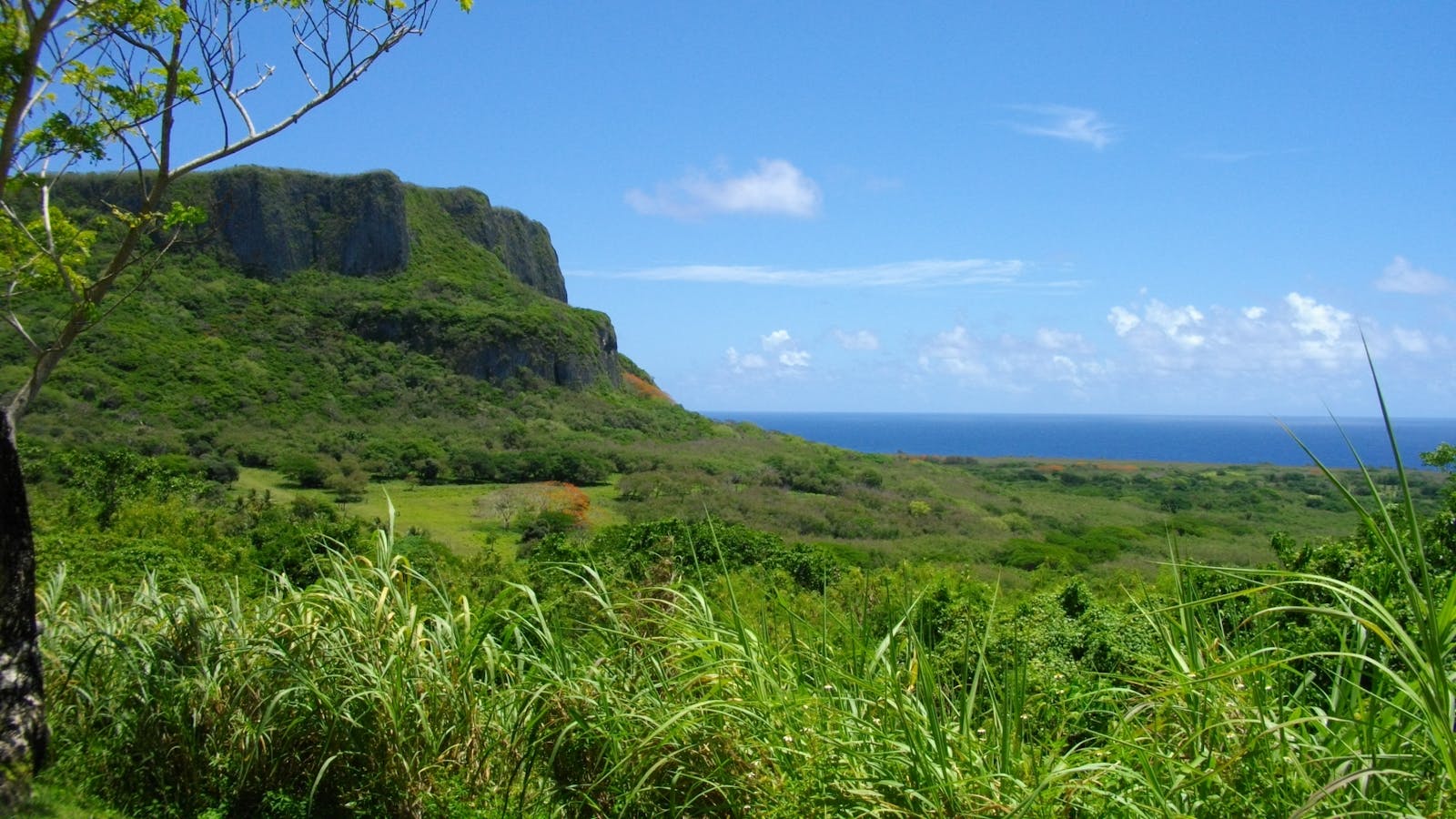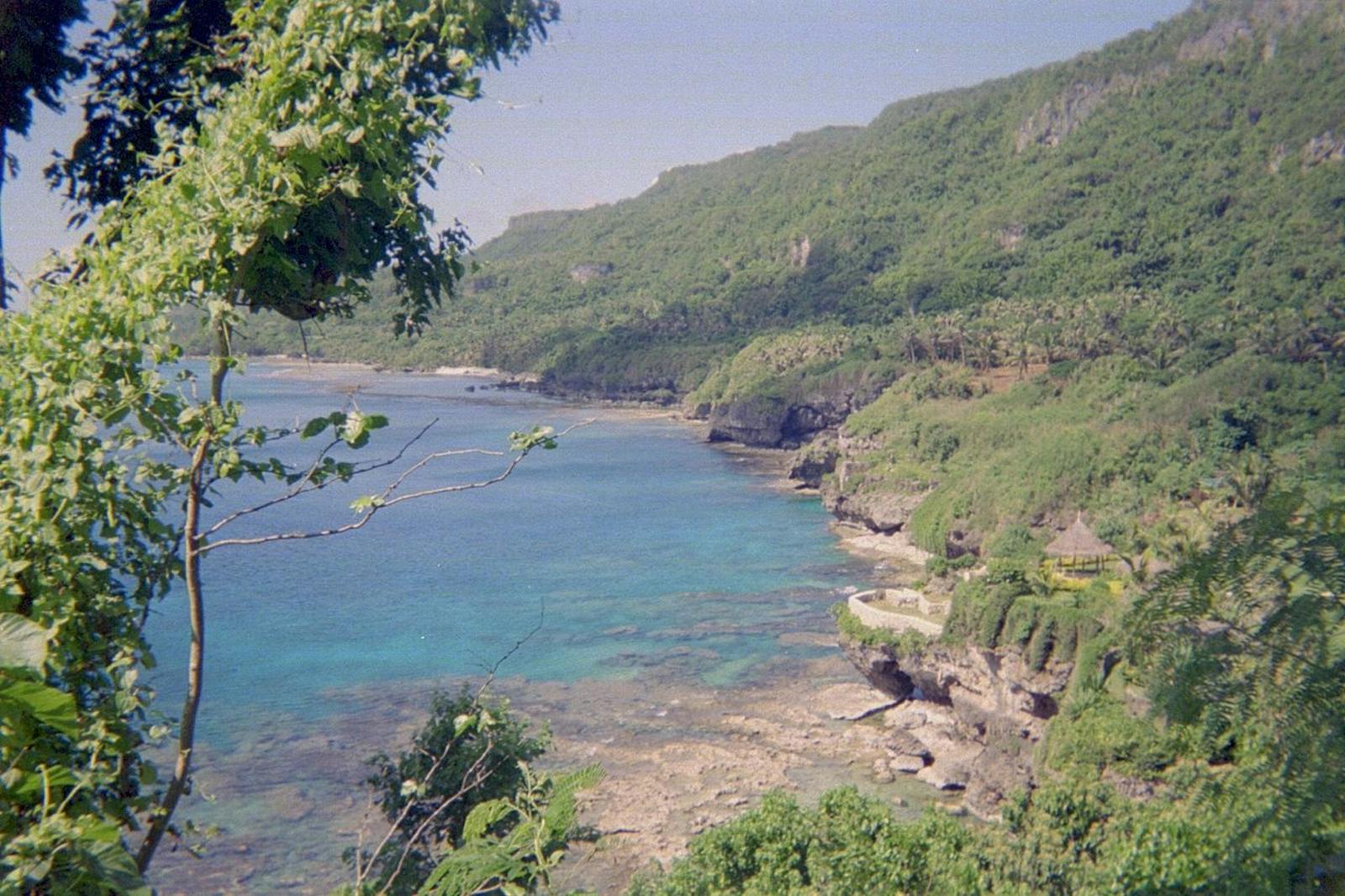Marianas Tropical Dry Forests
The ecoregion’s land area is provided in units of 1,000 hectares. The conservation target is the Global Safety Net (GSN1) area for the given ecoregion. The protection level indicates the percentage of the GSN goal that is currently protected on a scale of 0-10. N/A means data is not available at this time.
Bioregion: Guam & Marianas Dry Tropical Islands (OC9)
Realm: Oceania
Ecoregion Size (1000 ha):
104
Ecoregion ID:
637
Conservation Target:
90%
Protection Level:
2
States: Guam, Northern Mariana Islands
The Mariana Islands cover a 900 km arc in the western Pacific Ocean. These volcanic islands have accumulated species typical of remote oceanic islands―far-flying pigeons, white-eyes, rails, megapodes, fruit bats, and plants with sticky and spiny seeds that cling to the legs of birds, for example. The isolation of the archipelago has driven the speciation of island endemics, including the multi-hued, plum-fronted Marianas fruit pigeon. Guam, a raised limestone atoll furthest south, is the oldest at 30 million years, with newer, active volcanic islands in the north (Farallon de Pájaros).
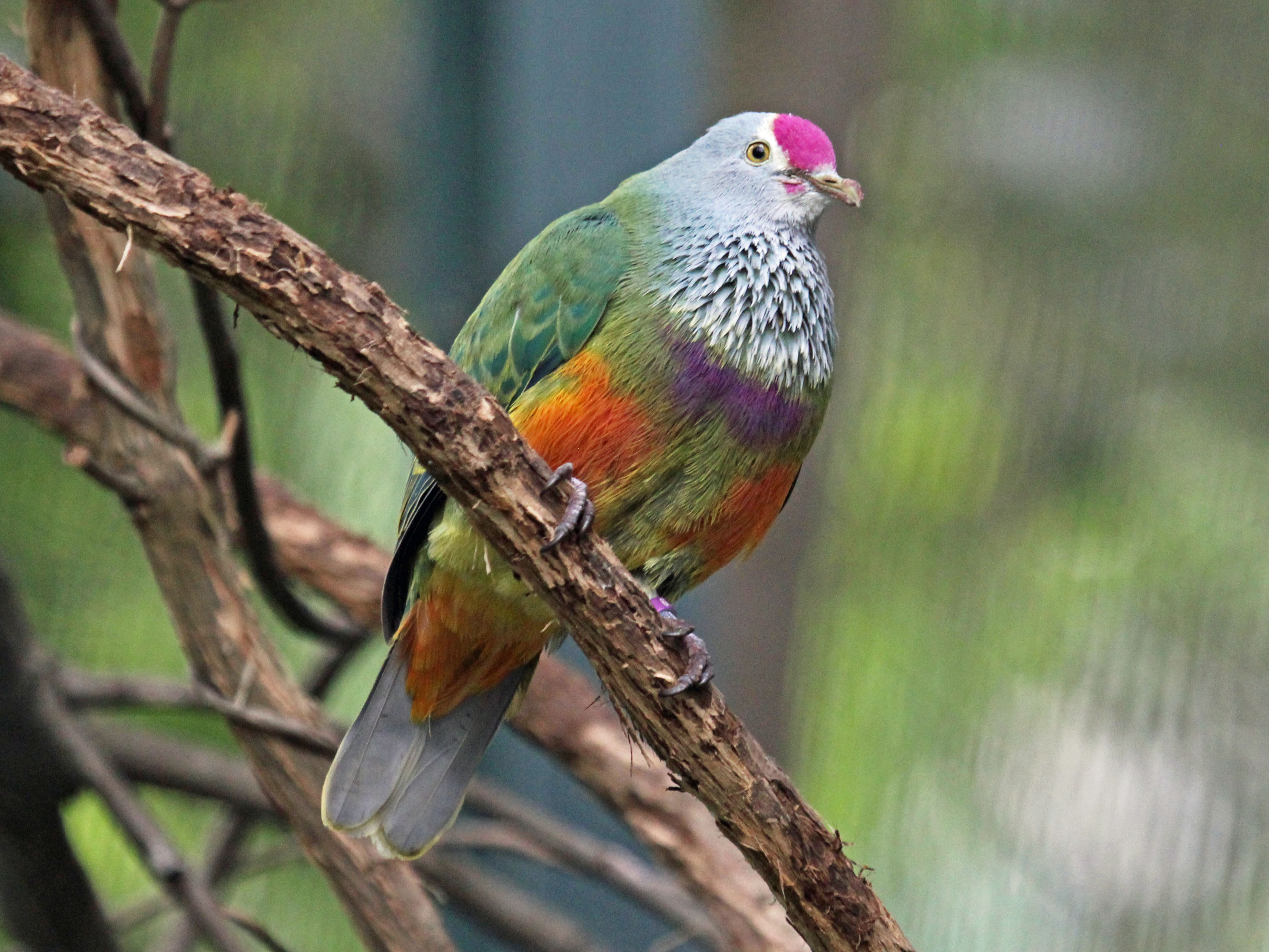
The flagship species of the Marianas Tropical Dry Forests ecoregion is the Marianas fruit pigeon. Image credit: Creative Commons
The nine major islands of the northern Marianas have little forest due to recent volcanic activity. Grasslands and patches of forest occur on older lava flows. The ironwood tree Casuarina equisetifolia, Pisonia grandis, pandanus, and the fern Nephrolepis hirsutula are common elements. Patches of upland forest occur with Aglaia mariannensis, Terminalia spp., and Elaeocarpus joga.
On the older southern islands, one finds forests on limestone (raised reefs or makatea) with Pisonia grandis, Artocarpus mariannensis (a native breadfruit), the banyan fig Ficus prolixa, Mammea odorata, Cordia subcordata, and Merrilliodendron megacarpus. Dendrocnide latifolia, Cynometra ramiflora, Intsia bijuga, and Erythrina variegata are also common. The endemic genus Guamia with only one species, Guamia mariannae, is common in the understory.
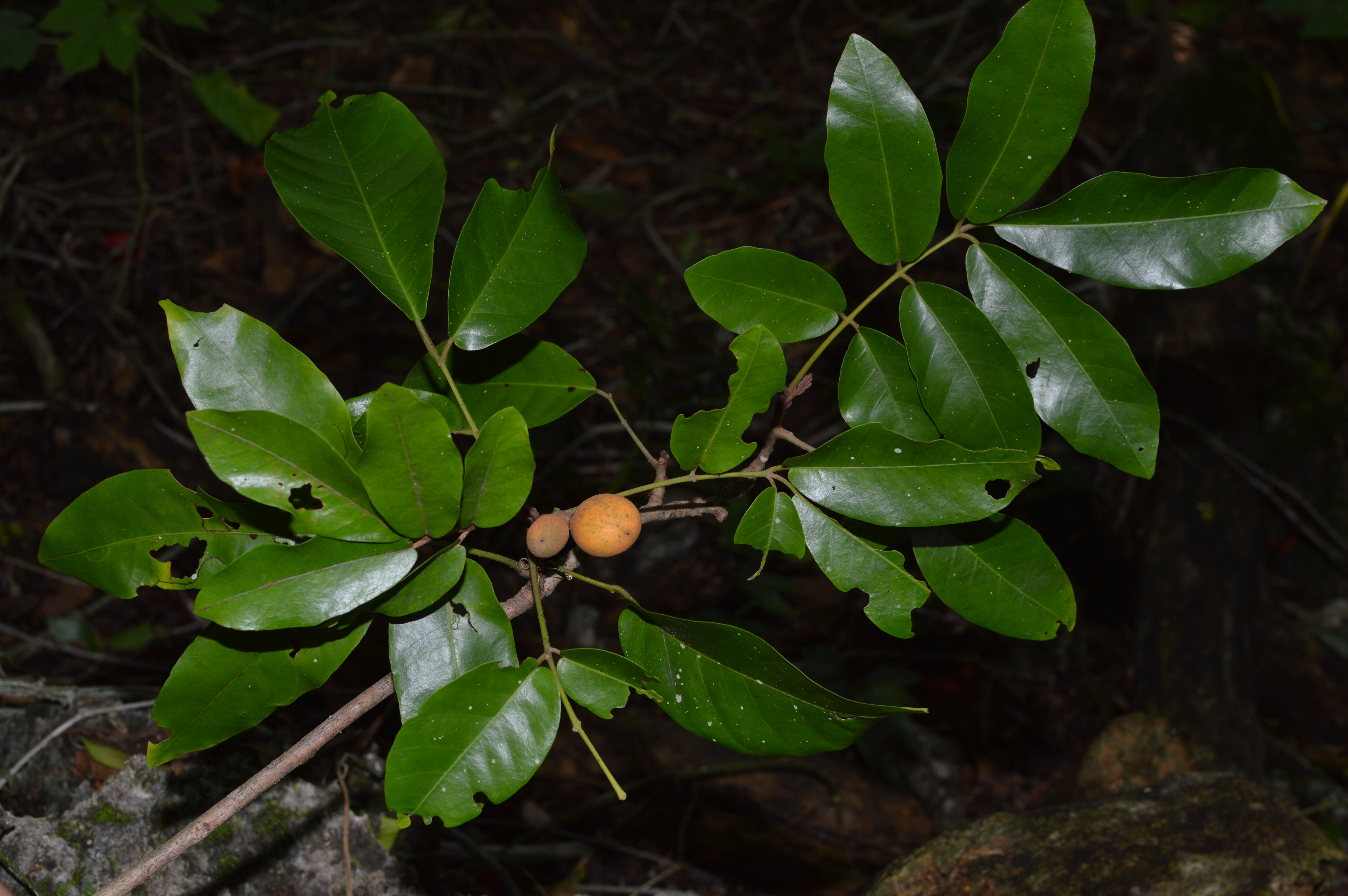
Aglaia mariannensis. Image credit: Creative Commons
Primary broadleaf forests on volcanic soils of the southern islands are dominated by Aglaia mariannensis and Elaeocarpus joga, a Micronesia endemic with blue berries favored by birds. Also on volcanic soils are grasslands with patches of forest occurring in ravines that include Pandanus tectorius, P. dubuis, Hibiscus tiliaceaus, Ficus prolixa, Glochidion mariannensis, and Premna serratifolia. The islands regularly experience strong typhoons that influence a forest structure that is dense with many vines and few emergent trees.
Fifty-five plants are endemic to the Marianas, including Serianthes nelsonii, Succinea piratarum, Succinea quadrasi, Aglaia mariannensis, and Heritiera longipetiolata. Twenty-five land birds are native with 16 unique to the islands (6 are extinct), including the Marianas crow, Rota bridled white-eye, Micronesian megapode, Micronesian starling, Guam swiftlet, Nightingale reed-warbler, Tinian Monarch, and golden white-eye. The Mariana flying fox is endemic as was the now extinct Guam flying fox. A subspecies of the Polynesian sheath-tailed bat is resident. Eleven geckos and skinks are native.
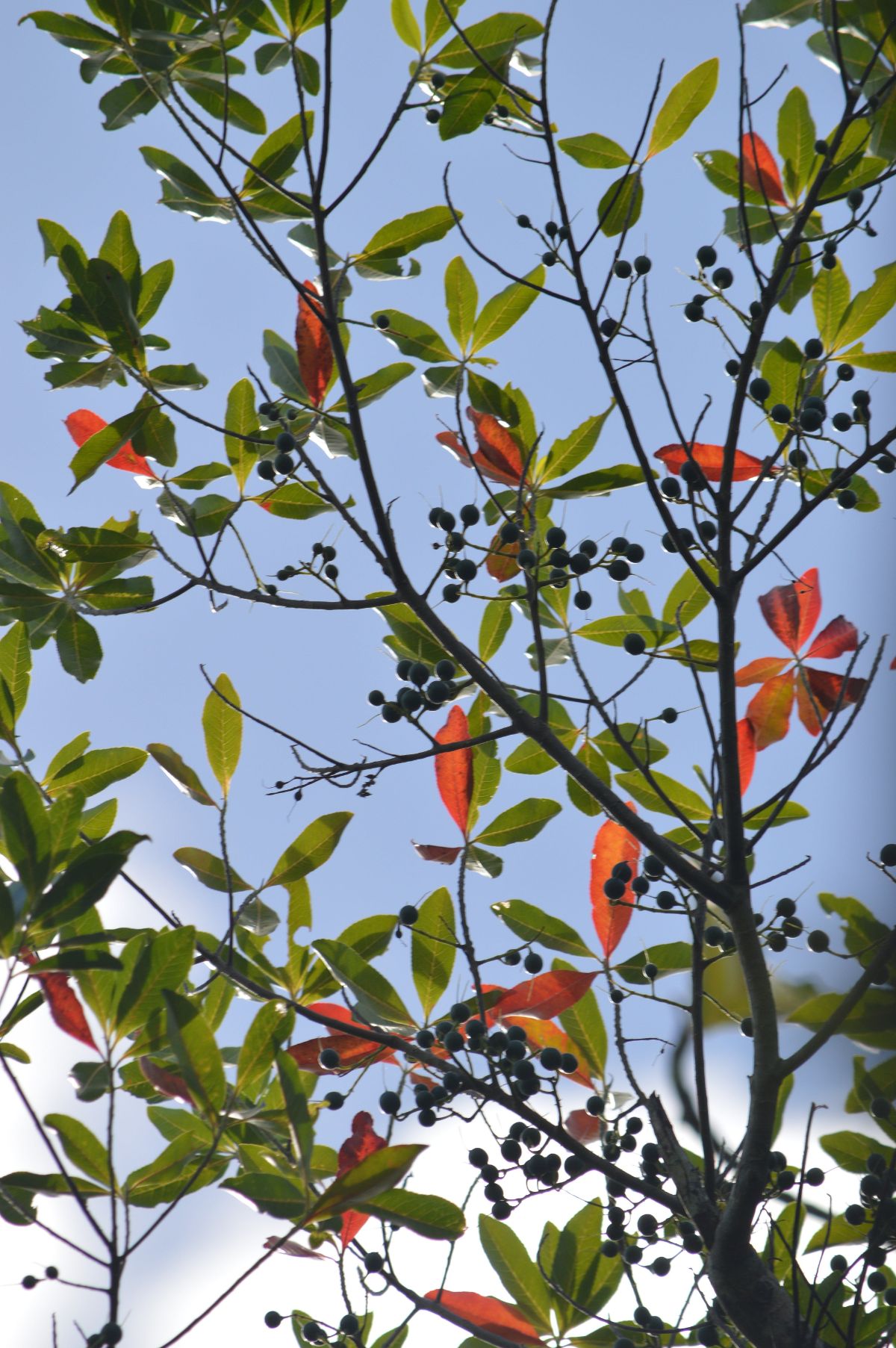
Elaeocarpus joga. Image credit: Creative Commons
The forests of the larger, southern islands have been long modified by people through settlement, agriculture, burning, battles of WWII, and the introduction of livestock and invasive plants and animals. Most are covered in grassy savannas and secondary growth forests with many introduced species, such as Triphasia trifolia, Jatropha gossypifolia, Pithecellobium dulce, Muntingia calabura, Cananga odorata, and especially Leucaena leucocephala. Remnant patches of original forest offer refuge to native species in the southern islands, such as on Saipan and Rota, though most has been eliminated on Guam.
Introduced cattle, pigs, Philippine deer, and goats degrade vegetation on most of the islands. Introduced rats and brown tree snakes eat native wildlife. The brown tree snake has been implicated in the extinction of three bird species on Guam since its arrival and is viewed as a major threat to Marianas wildlife.
Over 12 protected areas, including the entire northern islands of Asuncion, Maug, Uracas, and Guguan, are managed to protect native wildlife. Multiple recovery and species management programs, including invasive species control programs and translocations of threatened species, especially for the devastating brown tree snake, are underway.
The priority conservation actions for the next decade are to: 1) prevent the introduction of invasive species to the northern islands, including the brown tree snake and predatory snails, and the further spread of the little red fire ant from Guam; 2) remove feral ungulates and introduced predators from the islands of Anatahan, Alamagan, Pagan, Aguiguan, and Agrihan; and 3) translocate native forest birds from the southern islands to the northern islands and establish a captive breeding program. Other priorities include a captive rearing and breeding of Partulid snails program, eradication of scarlet gourd on Saipan, and protecting remnant limestone forests on Tinian.
Citations
- Berger GM, J Gourley, G Schroer. 2005. Comprehensive Wildlife Conservation Strategy for the Commonwealth of the Northern Mariana Islands. CNMI Division of Fish and Wildlife, Saipan, CNMI.
- Mueller-Dombois D, FR Fosberg. 1998. Vegetation of the Tropical Pacific Islands. Springer-Verlag, New York.
- Zicus S. 2018. Marianas tropical dry forests. Accessed 1 June 2018 at https://www.worldwildlife.org/ecoregions/oc0203
